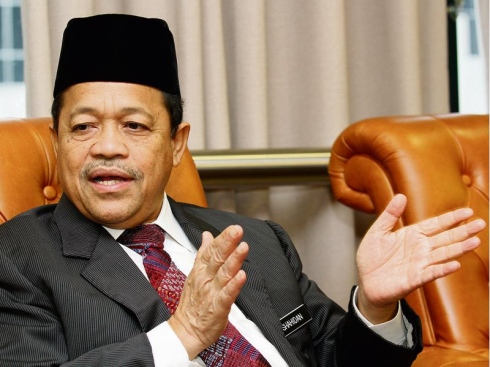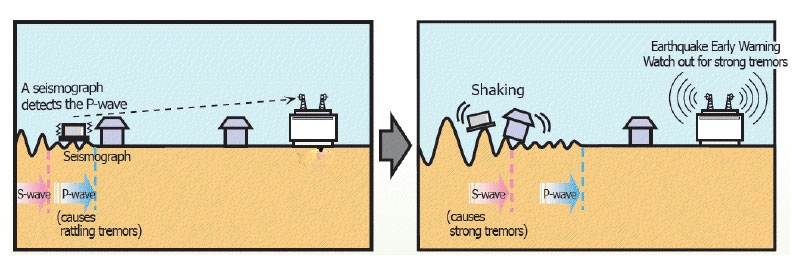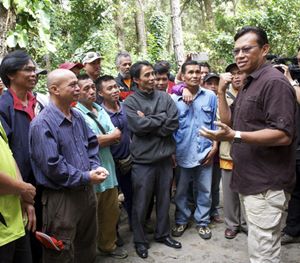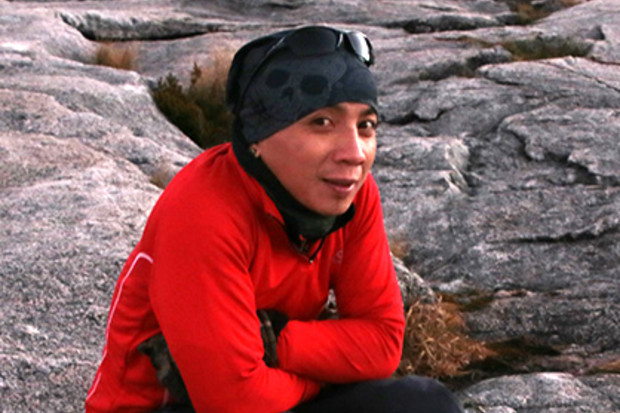After The Sabah Earthquake, These 7 Rules May Be Implemented At Kinabalu Park
Standing at 4,095 metres (13,435 ft) above sea level, Mount Kinabalu is the highest mountain in Malaysia and a World Heritage Site. It's also home to the largest flower in the world, the Rafflesia.
Earthquakes in Sabah are surprisingly nothing new. Since 1979, at least 100 earthquakes have hit the northern region of East Malaysia, with 10 of those reported in Ranau.
However, the earthquake on 5 June 2015 has set the record of being the strongest earthquake to have hit Malaysia in 39 years.
The relatively moderate earthquake broke the strongest earthquake record back in 1976, when an earthquake measuring 5.8 on the Richter scale struck Lahad Datu, causing heavy damage to property and cracks in buildings.
The last time an earthquake hit Sabah was just recently in February this year near Sandakan with a magnitude of 5.6 on the Richter scale.
Datuk Seri Dr Shahidan Kassim Minister of the Prime Minister’s Department attributed the lack of technology in detecting possible signs of earthquakes to the inability to issue early warnings
“Mount Kinabalu is seated on an active fault line, making it susceptible to earthquakes. This is not the first and it probably won’t be the last,” said Shahidan at the Dewan Rakyat in his winding-up speech on a motion regarding the recent earthquake.
Professor Kerry Sieh, director of the Earth Observatory of Singapore (EOS) at Nanyang Technological University was of the view that it would be no surprise if there were to be a repeat of the recent 6.0 magnitude within the next three decades.
With high chances of Sabah being hit by another earthquake in the future, immediate measures have to be taken to not only increase safety levels but preserve Malaysia's iconic natural heritage spots
1. Installation of seismic equipment in Mount Kinabalu for early detection of possible earthquakes
Seismic equipment are instruments that measure motion of the ground, including those of seismic waves generated by earthquakes, volcanic eruptions, and other seismic sources
Why it's important: Seismic sensors would be installed to help monitor tremors which could give vital information to geologist in anticipating possible earthquake, so that warnings can be issued if needed.
“It is still impossible to predict earthquake but we can monitor smaller tremors, which may or may not indicate that a bigger earthquake is going to happen," Prime Minister Najib said after a briefing by search and rescue officials in Sabah.
2. Equipping mountain guides with walkie-talkies for quicker conveyance of imminent danger
Why it's important: Datuk Seri Ahmad Shabery Cheek, Minister for the Multimedia and Communications Ministry pointed how crucial it was to equip guides with a form of immediate communication for unforeseen emergencies.
All walkie-talkies would be installed with a repeater to enable function in the mountainous area and a dedicated channel for guides to access.
3. Expansion of helicopter landings to accommodate larger military aircraft
Why it's important: Helicopter landing pads in Laban Rata and other locations on Mount Kinabalu would be expanded for larger military aircraft to enable easier transport of injured climbers. One of the issues faced during the search for victims of Friday's quake was the bad weather.
On expanding the helicopter landing pads, Prime Minister Najib said: “This is (an) essential issue because helicopters cannot land when the sky is cloudy and when the wind is strong. Sometimes, from our viewpoint, the weather looks good enough, but in actual fact, the climate up the mountains can differ, which doesn’t allow helicopters to land. So we will look into this so that no one can blame the authorities for not utilising the helicopters during such emergencies.”
4. Implementation of earthquake drills
Why it's important: The situation has changed now, especially since Sabah seems more prone to quakes, all the teachers and students are required to know the proper procedure in escaping an earthquake. To boot, even trekkers should be briefed on earthquake drills before hiking the mountain.
“Students are generally taught that in an emergency situation, they should drop everything and run down the fire escape. But that only applies during fires. When an earthquake strikes, you do the opposite — you drop to the ground, take cover and hold on. The children must know this,” says Datuk Jame Alip, state education director.
So what do you do when a earthquake strikes?
DROP, COVER, HOLD. DROP to the ground; take COVER by getting under a sturdy object; and HOLD ON till shaking stops.
5. Barring the minimum age of climbers to 15
Why it's important: Currently there is no specific age limit for climbers as stated by the Mount Kinabalu official website. However, due to the steepness and dangers of the slopes, authorities are suggesting the minimum age of climbers be at least 15.
"The second half of the hike around 2am was dark and really cold. Since the trail was made of granite, it got really slippery after the rain. It was pretty steep, rocky and uneven with the only way up and down was by using the rope," said Manisha Doshi, 24 who trekked Kinabalu just last year.
6. Ratio of one guide to a maximum of 6 climbers
Why it's important: Mountain guides are compulsory for climbers trekking mostly due to safety reasons. Though the Mount Kinabalu website officially states that there can only be six climbers to one guide, there has been incidences where more than eight climbers were assigned to a guide.
A 28-year-old computer engineer from Kuala Lumpur who also recently trekked the mountain was shocked when she realised that there were more that eight people in her group and was only assigned one guide. She continued to comment of the hastiness of the safety brief.
7. Insurance coverage for guides
Why it's important: Friday's earthquake was a gentle reminder of the high exposure of dangers these dedicated mountain guides face when guiding trekkers. Each climber currently pays RM 7 for insurance coverage for the duration of the trek, but nothing has been done to insure the safety of the guides.
According to Kadazan Dusun Murut (KDM) Malaysia president Datuk Peter Anthony, trekkers will not be required to pay a little more to cover insurance for the guides. This will enlighten the burden of their families in the event of an accident.
He also urged Sabah Parks to offer mountain guides a permanent position so that could earn a stable income as at the guides usually were part-timers.








